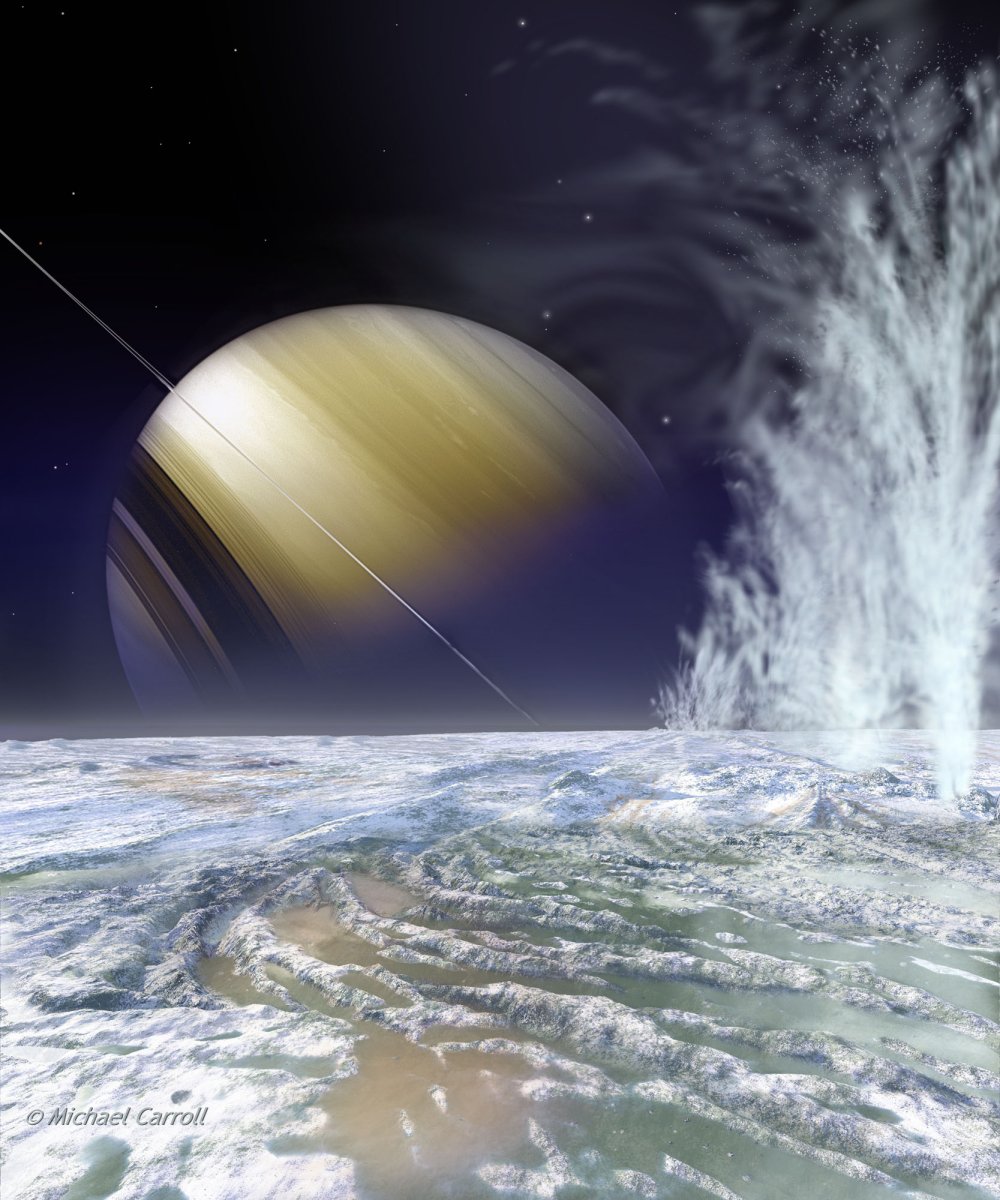MessageToEagle.com – Mysterious moon Enceladus is one of the most fascinating places in our Solar System to search for life.
During its mission, the international Cassini spacecraft have made many close observations of 500 km-diameter moon of Saturn – Enceladus, which is considered a potentially habitable alien world.

Now, a new study based on data from Cassini, suggests that Enceladus’ core could be a huge source of heat, approximately 100 times more than what is generated by the natural decay of radioactive elements in rocks in the moon’s core.
Cassini measured salts and silica dust during its close flybys of the icy moo and delivered data suggests an interaction between rocks and hot water, at least 90 degrees Celsius (that’s 194 degrees Fahrenheit for us).
The tidal effect from Saturn is thought to be at the origin of the eruptions deforming the icy shell by push-pull motions as the moon follows an elliptical path around the giant planet.
However, the heat produced from the gravitational pushing and pulling in the ice would be too weak to compensate the heat loss seen from the ocean – the globe would freeze within 30 million years, researchers say.
“Where Enceladus gets the sustained power to remain active has always been a bit of mystery, but we’ve now considered in greater detail how the structure and composition of the moon’s rocky core could play a key role in generating the necessary energy,” says lead author Gaël Choblet from the University of Nantes, in a statement.
The researchers made a simulation of Enceladus’ core made up of unconsolidated, easily deformable and porous rock – easy for water to go through it. Cool liquid water from the ocean can seep into the core and gradually heat up through tidal friction between sliding rock fragments, as it gets deeper.
Water circulates in the core and then rises because it is hotter than the surroundings.
The simulations deliver a one-two punch for explaining what is going on Enceladus today.
“Our simulations can simultaneously explain the existence of an ocean at a global scale due to large-scale heat transport between the deep interior and the ice shell, and the concentration of activity in a relatively narrow region around the south pole, thus explaining the main features observed by Cassini,” says co-author Gabriel Tobie.
The scientists say that the efficient rock-water interactions in a porous core massaged by tidal friction could generate up to 30 GW of heat over tens of millions to billions of years.
“Future missions capable of analysing the organic molecules in the Enceladus plume with a higher accuracy than Cassini would be able to tell us if sustained hydrothermal conditions could have allowed life to emerge,” says Nicolas Altobelli, ESA’s Cassini project scientist.
Paper (“Powering prolonged hydrothermal activity inside Enceladus,” by G. Choblet et al. is published in Nature Astronomy, 6 November 2017.)
MessageToEagle.com






